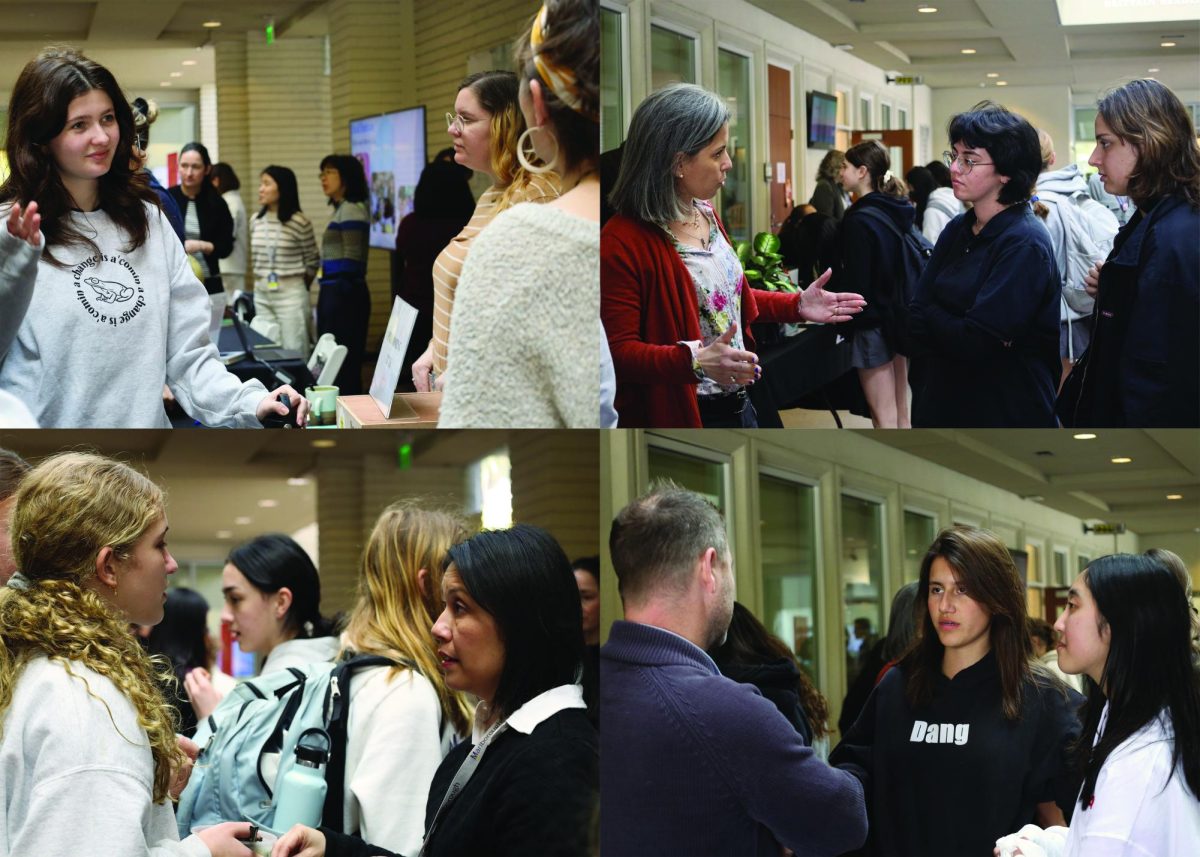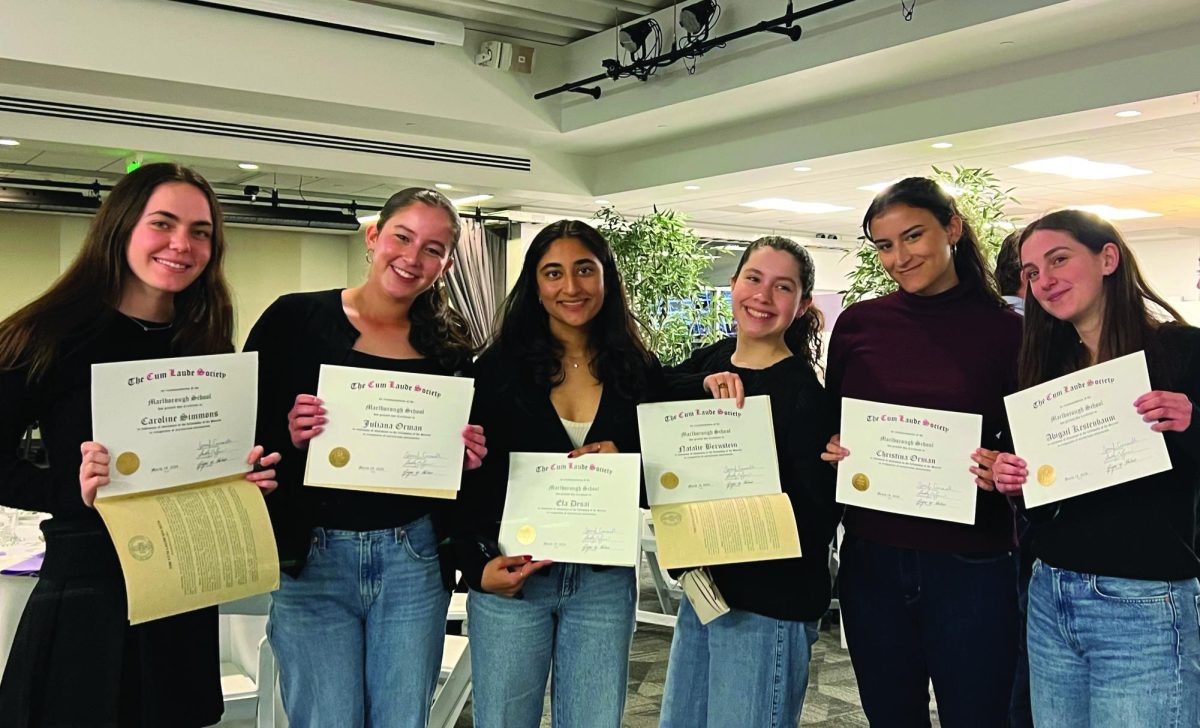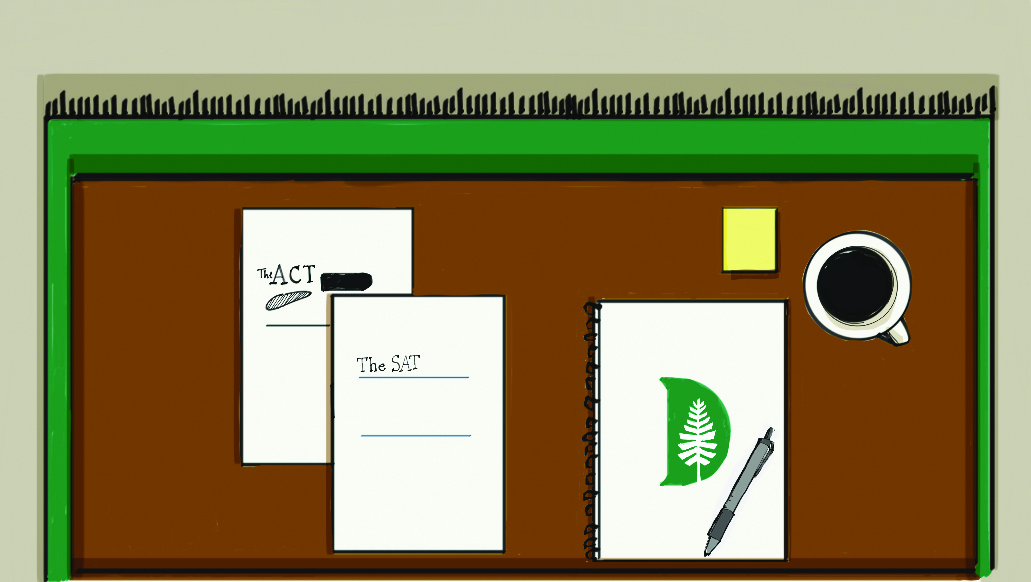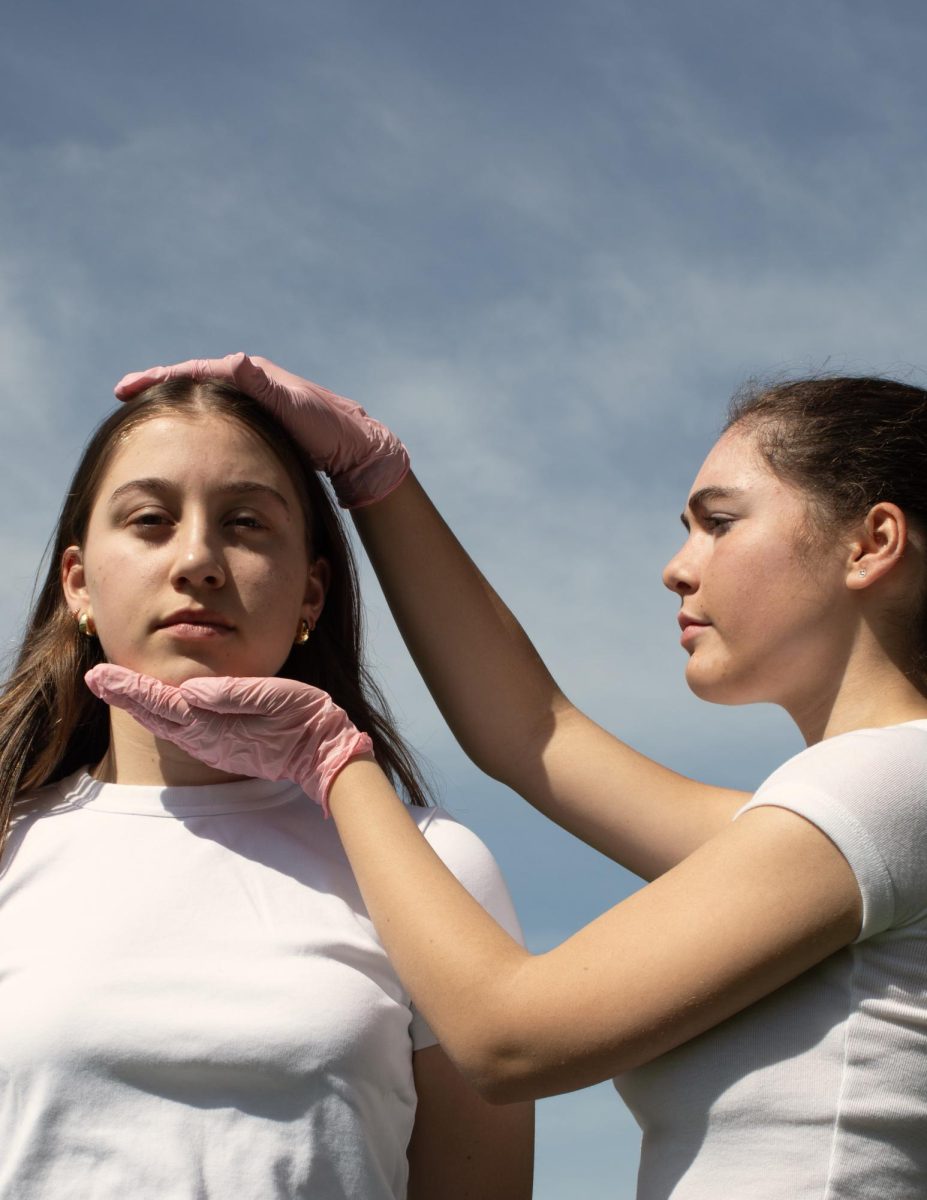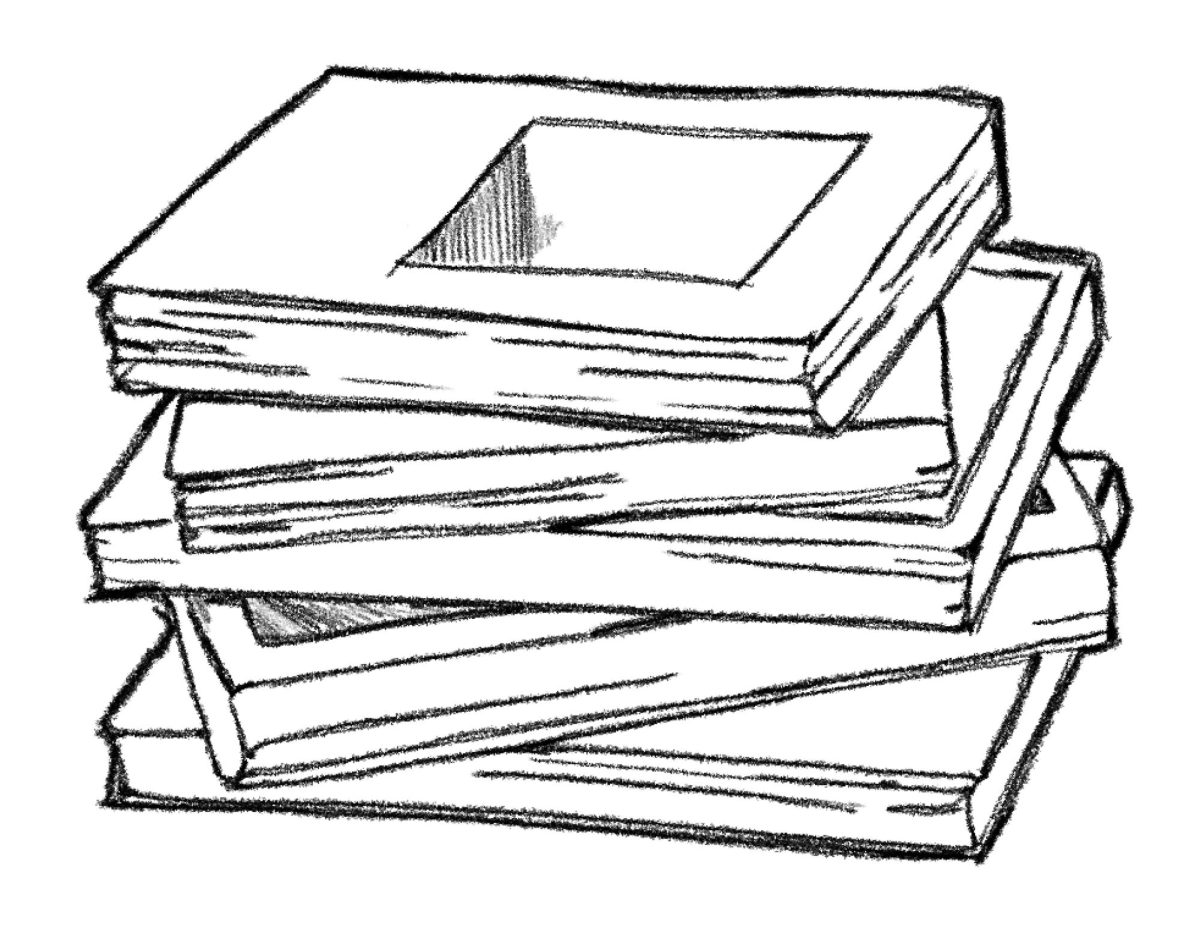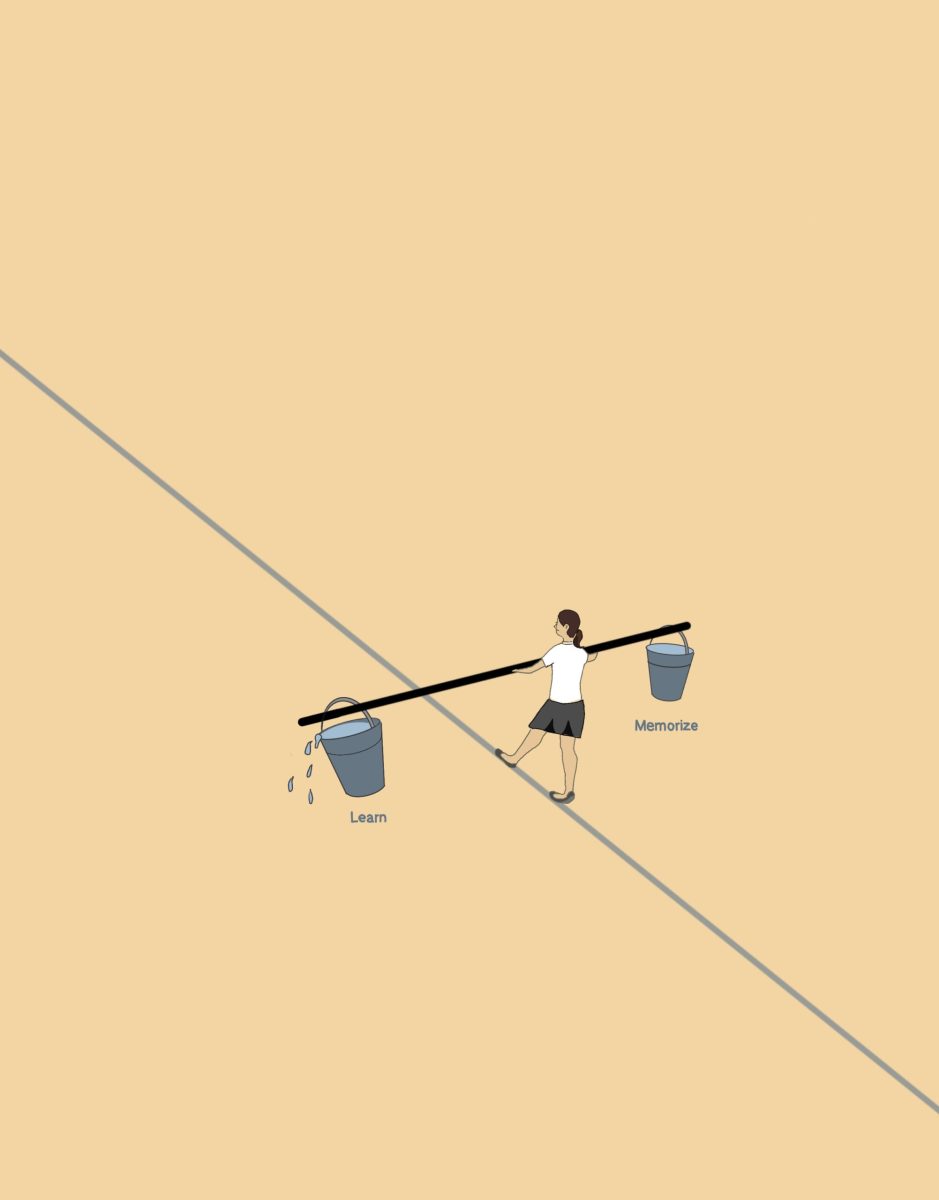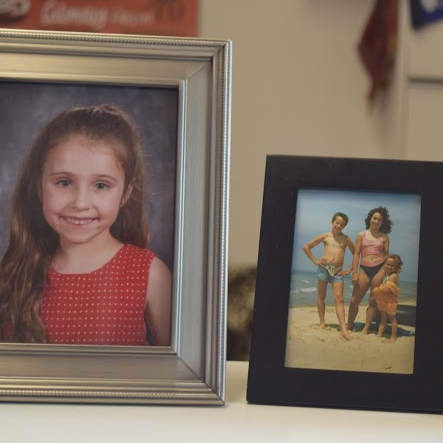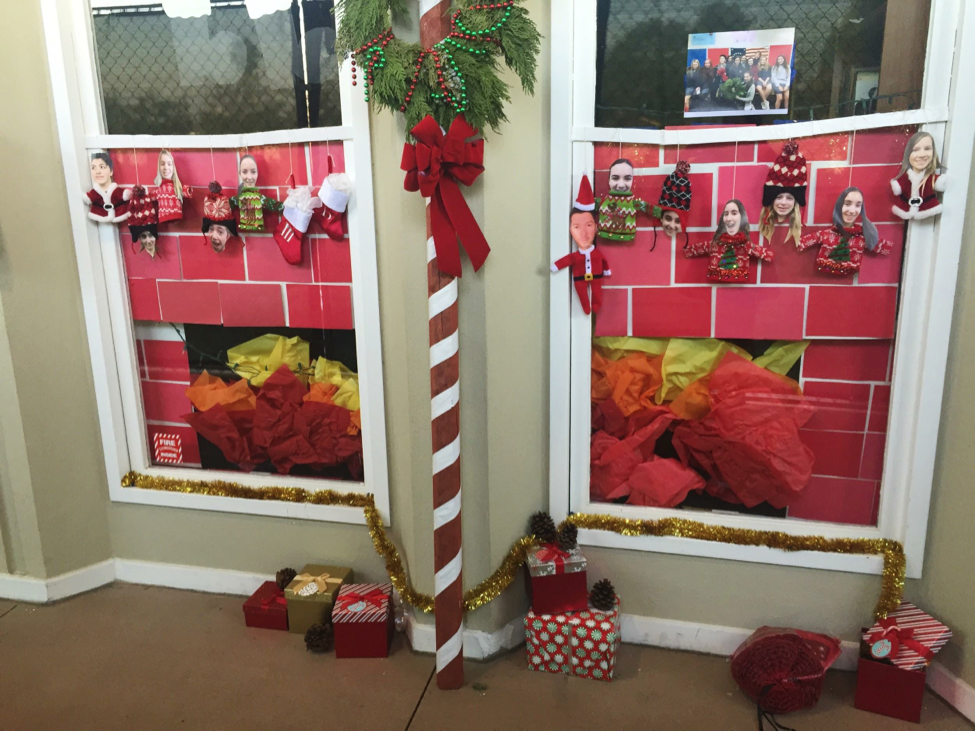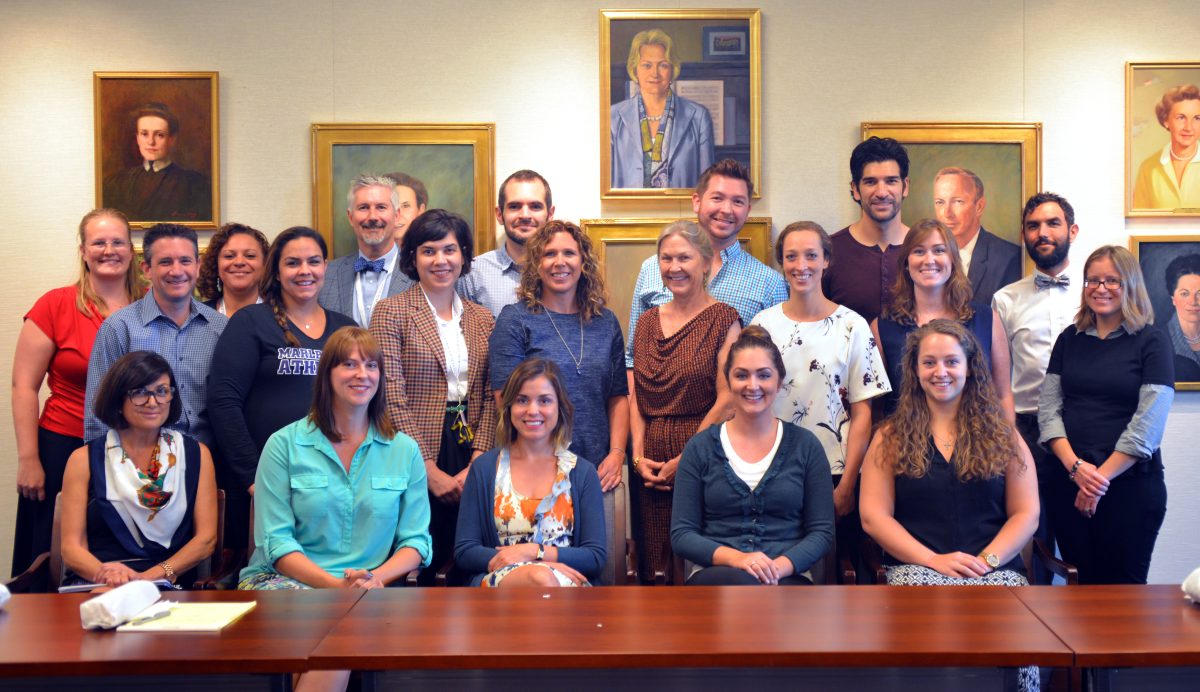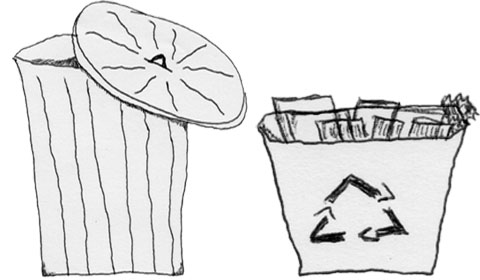
By Jenna ’16, Sarah ’17, Ivy ’16
After enjoying an avocado quesadilla from Cafe M, Juliana ’18 disposes of her trash in one of the many bins around campus. Little does she know that the food scraps and paper plate she mindlessly tossed away—along with the rest of the School’s trash—will travel across the city in a complex process. At one of three times during the day, Marlborough’s facilities staff empties the bins around campus into one of the School’s three dumpsters. Marlborough’s trash then travels in an Athens garbage truck from the School to the Athens Materials Recovery Facility in the City of Industry where workers sort the waste as it travels through the heart of the building on conveyer belts. Recyclables, compostables and trash, compacted into cubes, then continue their journeys separately, transported to different landfills and plants across Southern California.
So far this academic year, Marlborough has generated 17,290 cubic feet of waste, according to Facilities Manager Matt Riddle. With a Marlborough dumpster containing about 130 cubic feet, the School’s waste thus far could fill roughly 135 dumpsters. One significant component is student and faculty paper usage. During the 2013 school year, Marlborough used one million sheets of paper. Because each standard ream of paper contains 500 sheets, Marlborough uses the equivalent of 2000 reams of paper per year, a stack of which would near a mile in height and three tons in weight.
Noting that the School’s waste levels are typical for a school community of a similar size, Riddle also indicated that Marlborough is making positive strides toward decreasing its waste production.
What are the main contributors to Marlborough’s waste? Where does the School’s trash end up? What is Marlborough doing to reduce its waste output?
HOW TRASH PILES UP
Even as the Campus Environment Committee and other environmentally conscious students and faculty promote the implementation of green initiatives, many members of the School community said they were unaware of the magnitude of the waste that Marlborough produces.
Students and faculty generate the vast majority of the campus’s trash. Each day, Cafe M and the Academic Resource Center contribute averages of 27 cubic feet and 13.75 cubic feet, respectively, combining to produce 3,865 cubic feet in total this year. One culprit in the ARC is excess printing, though the School has seen a 37% decrease in paper usage since 2010.
Riddle explained that he is pleased regarding the waste production at the School.
“I feel good. I really do. I think part of that comes out of the fact that I know what happens to the waste,” Riddle said, explaining that he has confidence that Athens, Marlborough’s contracted waste collection service since September 2010, processes waste sustainably.
Others on campus, nonetheless, expressed disappointment at the volume of Marlborough’s waste production and a lack of urgency among members of the community to reduce their waste footprint.
“We produce a lot of waste. Kids bring a lot of stuff and things that they throw away when they could’ve brought things they could reuse,” science instructor and co-chair of the Campus Environment Committee Lisa Ellis said.
11th Grade Vice President Ellie ’16, who serves along with other class vice presidents on the environmental council, said that when she first served as class Vice President in 2013, the School produced much more waste. She said that she is enthusiastic about the decline in trash output over the past couple of years but is still dismayed by the enormity of the number.
Ellie said first learning about the School’s paper usage appalled her.
“The number that Mr. Posin told us last year was shocking. I just feel like there has to be something to be put in place because we need to become a more sustainable and environmentally friendly campus and school in general. I think it’s necessary that we reduce our waste in order to get there,” Ellie said.
12th grade Vice President Julia ’15 explained that she would like to see a decrease in the School’s trash output and an increase in each girl’s awareness about how much waste she personally produces. Ellis agreed with Julia that, thanks to an outstanding facilities staff, students lack an understanding about their environmental footprint.
“If at the end of lunch nobody went around and picked up all the stuff that was left out during lunch, people would get a better sense of how much garbage was left around,” Ellis said.
A LOT TO PROCESS
Athens’s on-site separation and sorting process allows Marlborough to comply with recycling mandates while also using a single bin method.
The Materials Recovery Facility sorts waste into many categories, including paper, used paper, mixed paper, cardboard, several different grades of metals, wood and green waste, as well as several different grades of plastic.
Employees identify and separate recyclable plastic and paper products as they pass by. After this initial sweep, the facility’s machines take over the process, separating out the smallest pieces first. The trash passes over a screen with small pores, with a device called a shaker moving the waste along. Next up, the waste goes through a progression of screens and shakers with increasingly larger holes that target specific types of trash. Below each screen, bunkers collect the material that drops. This set-up enables the workers to move specific types of trash to a landfill or another recycling facility.
Once organic materials such as food waste are separated from non-organic materials, Athens transports the bales of food waste to the American Organics facility in Victorville, CA. Up to 700 tons of organic waste a day are made into compost that can be used in topsoil, potting mix and other blends of compost.
Account Manager Carlos Barajas stressed the company’s promise to increase recycling and to comply with the California AB-341 Recycling Law, which went into effect on July 1, 2012. The law states that any entity that produces over four cubic yards of trash per week must implement a recycling program.
“Recycling [is] our main priority,” Barajas explained. “Cleaning the world and making it better.”
According to a statement on the company’s website, Athens, which recycles 30-40% of the waste it receives, is committed to improving waste management in order to benefit the environment. One of the company’s goals is to extend the life of landfills by recycling more material. The largest landfill in the country, Puente Hills, which the greater Los Angeles area depends upon, reached its maximum capacity on Oct. 31, 2013. Its closure illustrates the need to decrease waste in the greater Los Angeles community as well as at Marlborough.
“We need to invest in more Materials Recovery Facilities. The more places we have to recycle, the more we will recycle,” Barajas said.
Barajas said he supports the mission of Athens Services completely.
“It is an excellent company to work for. We’re not only looking at just tomorrow. We are looking at the future of being a better, greener company,” Barajas stated.
CLASSY, NOT TRASHY
Marlborough has made many efforts to reduce waste in recent years. And, while members of faculty and staff like Posin and Ellis have pushed for environmental reform on campus for quite some time, many members of the community agreed that the students determine how much waste Marlborough generates.
Many who expressed concern about Marlborough’s waste pointed out that, even though Athens’s process checks the trash for any recyclables, responsibility still lies with students to optimize the recycling process.
“Honestly, sometimes I don’t think there is a knowledge. I think it’s getting better now, but people just trash anything and there’s not much awareness around what is trash and what isn’t,” Ellie expressed.
To improve students’ and teachers’ recycling habits, the Campus Environment Committee (CEC) instituted new recycling protocol this semester. Blue bins in classrooms are now receptacles for clean paper only. As a result, dirty plates or used Starbucks cups no longer soil paper that would otherwise be recycled. The School will also reduce plastic usage by eliminating the need for plastic liners in blue recycling bins.
Paper-saving initiatives have also taken root at Marlborough. In past years, piles of unclaimed printouts around the Academic Resource Center’s printers at the end of the day were a testament to excessive waste. In response, the ARC now features a system which requires the student printing to walk to the printer and select the document she wants to print. This measure prevents students from printing their documents to multiple printers “just in case,” as many confessed to doing, a convenient method with significant consequences. CEC hopes to see the new system continue the trend of decreased paper usage across campus.
While Ellis acknowledged that the pace and stress of a Marlborough day may prevent students from prioritizing recycling, she wishes students would devote more thoughtfulness to the waste-saving effort.
“I’m a little bit annoyed about lack of awareness,” Ellis shared. She added that seeing girls spit gum into “Cans and Bottles” receptacles, when gum is banned from campus, adds insult to injury.
“I’d like to help build in some self-policing and self-awareness so that that would not happen,” Ellis said.
Julia has observed an increased attention among students to green campaigns on campus but agreed that some students continue to neglect to pick up and reduce waste.
“This has been an issue in elementary school and if you still don’t get it, it’s like, ‘Get with the program,’” Julia quipped.

